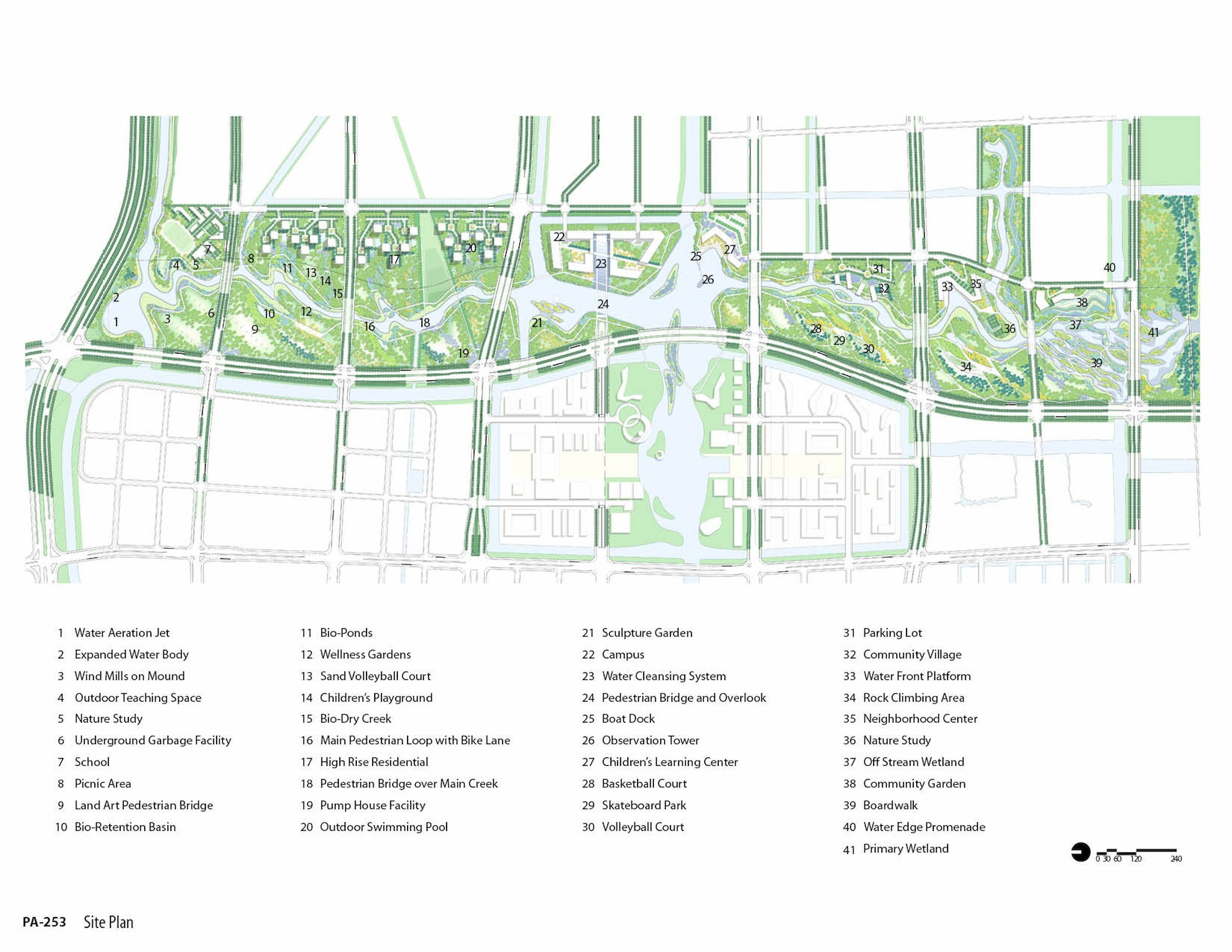
Ningbo Eco-Corridor
The delicate balance between natural systems and human habitation is critical for planning new human occupation, from early staging and construction phases to final occupation and use.
Ningbo Eco Corridor Utility Buildings and Pavilions, Ningbo, China
Sponsor: Ningbo East New Town Planning Bureau
Program: Pump House, Tea House, Café, Restroom prototype
Master Planner and Landscape Architect: SWA Group
Ningbo, a metropolitan industrial city in the Yangtze River Delta, serves as a pivotal economic center bordered by Shanghai and Hangzhou, with its identity deeply connected to water, reflected in its name meaning "tranquil waters." The Ningbo Eco-Corridor Park initiative transforms 250 acres of industrial and agricultural land into a sustainable urban oasis, prioritizing water treatment, solar energy, and biodiversity enhancement. Central to the project is the Eco-Corridor, seamlessly connecting city districts and emphasizing water filtration, native vegetation, and renewable energy integration, setting a precedent for sustainable development in the region while enhancing environmental quality and community well-being.
The architectural designs within the Ningbo Eco-Corridor Park project are not mere structures but rather extensions of the surrounding natural landscape, seamlessly blending into their environment. Embracing organic and sculptural forms, these buildings are carefully crafted to harmonize with the ecological themes of the park, creating a cohesive and visually striking ensemble.
In selecting materials, a deliberate preference is given to locally sourced and traditional elements such as clay bricks, raw concrete, vine trellises, and weathering steel. These materials not only root the structures within the cultural and historical context of Ningbo but also possess inherent qualities that allow them to age gracefully over time, further enhancing their integration with the landscape.
Beyond their aesthetic appeal, these buildings serve as functional hubs within the park, catering to the needs of visitors while embodying principles of sustainability. Each structure is designed with innovative features that enable it to collect and treat water, harness solar energy, and even generate power. These sustainable design elements not only reduce the environmental impact of the park but also contribute to its self-sufficiency and resilience, ensuring its long-term viability as a green urban oasis.














